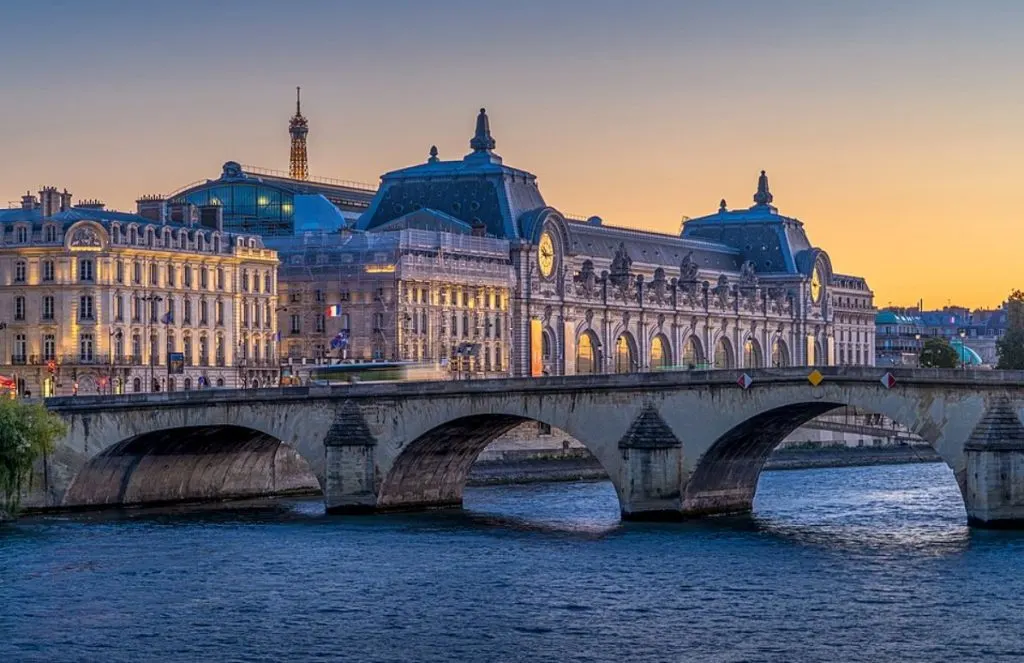When it came to depicting dancers, and more specifically, ballet dancers, then this French artist was one of the most notable painters to do so.
Edgar Degas (1834-1917) was an Impressionist artist who didn’t agree with everything the Impressionists did. His style is very similar but he never painted outdoors and even detested the notion of doing so.
He was a master draughtsman and this is reflected in his oil paintings in which he managed to excellently capture movement.
Let’s take a closer look at some of the most interesting facts about The Ballet Class by Edgar Degas, one of the most famous Impressionist paintings ever completed.
1. It took about 3 years before Degas completed his masterpiece
Edgar Degas was born in Paris into a wealthy family. His mother was a Creole and his father was a banker who often spent time in New Orleans in the United States.
He started drawing at an early age and although he studied law at the University of Paris, he was always destined to become a great artist.
He lived in Italy for 3 years during the late 1850s and started exhibiting his paintings at the Paris Salon from 1865 onward.
Although he was initially interested in history and mythological paintings and often copied the works of the Old Masters, he started focusing on contemporary subject matter during this period.
Degas started working in the Ballet Class in 1871 but he stayed for an extended period of time in New Orleans in 1872. He finally completed the painting in 1874.

2. The painting depicts a rehearsal conducted by one of Degas’s close friends

The painting depicts a rehearsal of a large number of ballet dancers led by an old man. This was ballet master Jules Perrot (1810-1892), a friend of the artist.
Degas was allowed access to these private backstage rooms where he managed to draw the interior and the dancers before completing the painting in his studio.
It’s a remarkable work in the sense that Degas painted it from a somewhat elevated position. This allowed the painter to capture the entire area where the dancers were rehearsing.
Degas managed to masterly capture the ballet moves of the young ballet dancers in a way that makes his works so distinctive.

3. It was commissioned by a renowned French operatic baritone
Degas was already a renowned artist by the 1870s because of his contributions to the annual Paris Salon, the most prestigious event in the world of art at the time.
The Ballet Class was a commission from Jean-Baptiste Faure (1830-1914), another friend of the artist who was a famous French operatic baritone as well as an avid art collector.
Faure made his debut at the Paris Opera in the early 1850s and at the Royal Opera House in London in 1860. He spent most of the wealth he acquired from his career on art.
At the time of his death, he owned 62 paintings by Claude Monet and 67 paintings by Édouard Manet, including his famous “Le Déjeuner sur l’Herbe.”
That was quite an impressive collection!
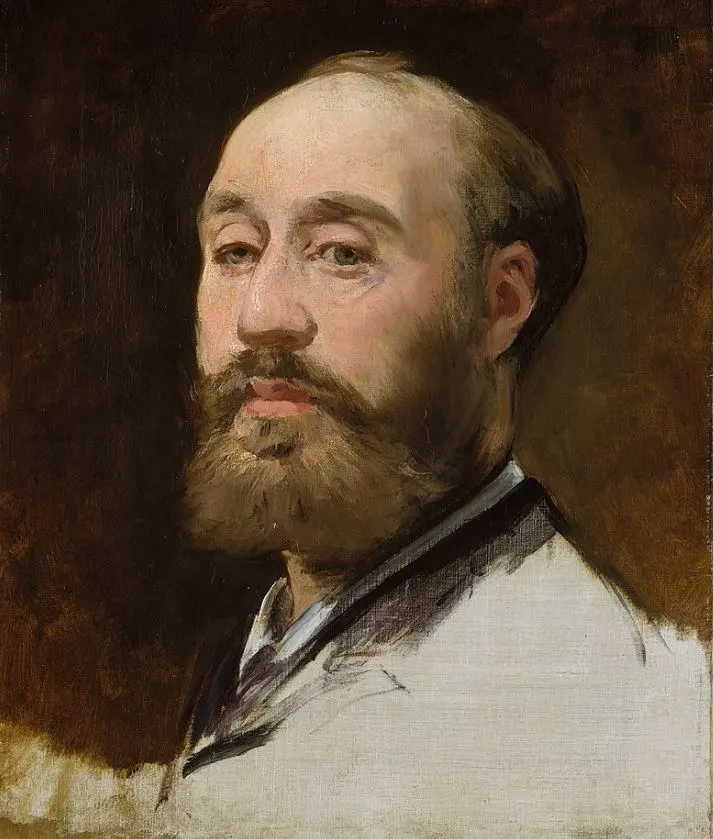
4. Degas initially presented another version to Jean-Baptiste Faure
What’s remarkable about this painting titled “The Ballet Class” is that it was only the second version Degas completed on this subject.
He briefly abandoned this work to start painting a very similar version titled “The Dancing Class” and this was the first version he presented to Faure.
The composition is fairly similar but many details differ, especially the fact that there seems to be a lot more movement in the central part.
The painting is part of the collection of the MET, the Metropolitan Museum of Art in New York City.

5. It depicts a room inside the Paris Opera a year before it burned down
Both works are imaginary scenes of a ballet rehearsal that took place in a room inside the Paris Opera. The opera had moved from the Théâtre des Arts to the Salle Le Peletier in 1820.
This building was constructed in the same location on the Rue de Richelieu and served as the official home of the Paris Opera between 1821 and 1873.
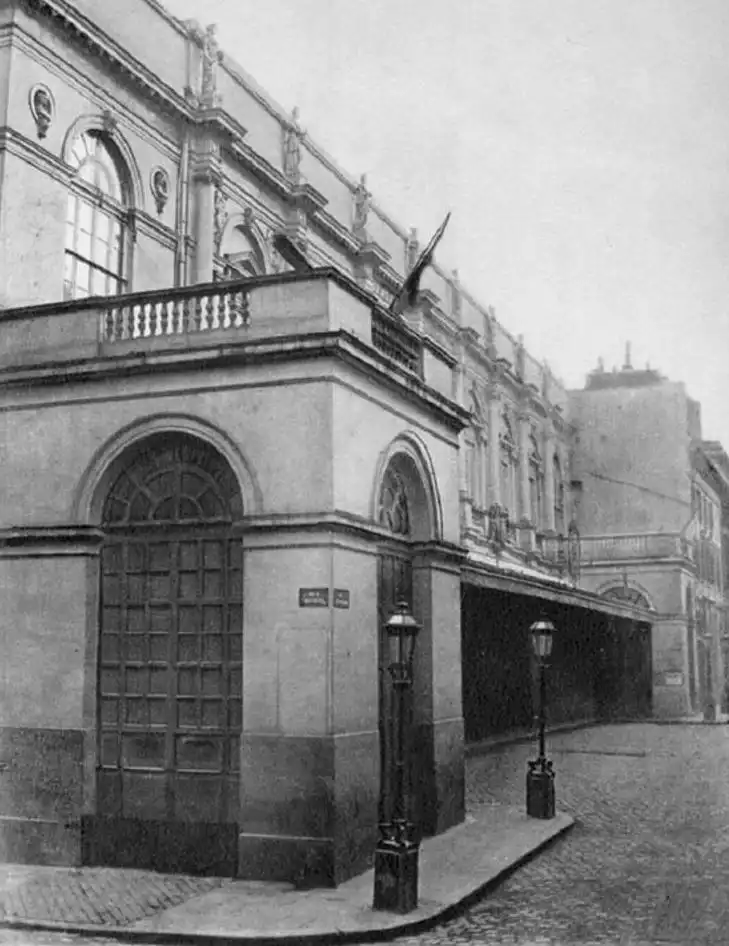
This monumental opera house was completely destroyed by fire on the night of October 29, 1873. The fire raged for 27 hours and as you can see, not much of the structure was left.
The Paris Opera wasn’t too concerned about the fire because the opulent Palais Garnier was nearly completed and opened its doors just 2 years later n 1875.
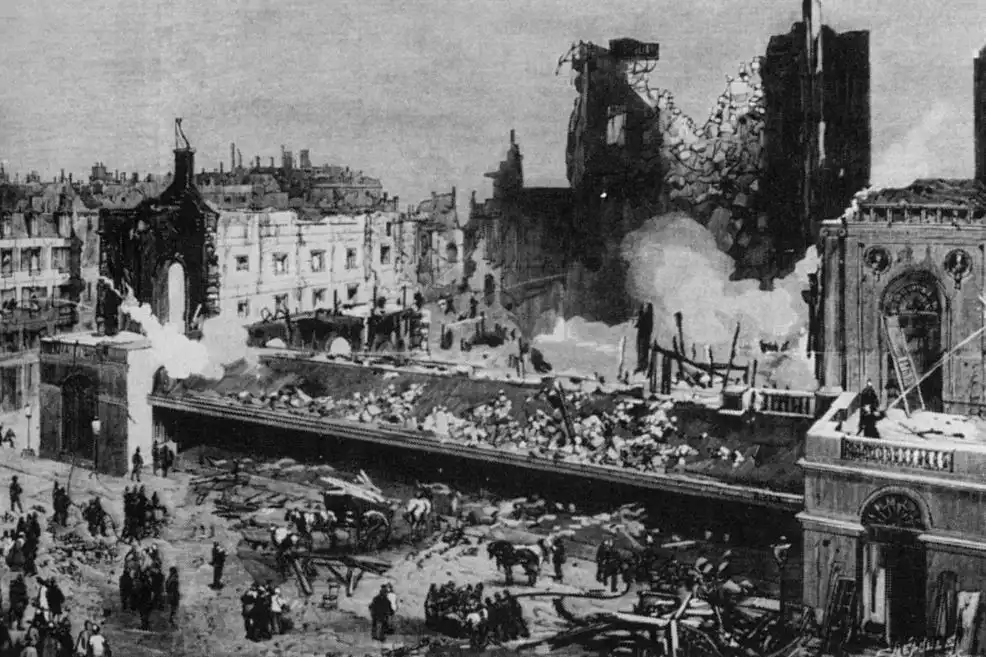
6. It’s one of many paintings by Degas that was inspired by ballet dancers
The 1870s marked an important transition period for Edgar Degas. Not only did he join the French army during the Franco-Prussian War which left him little time to paint, but his family’s business went bankrupt as well.
It was the first time in his life that he had to work to make a living. Ballet dancers not only interested him personally, but these paintings also sold well so he started focusing on this subject matter extensively.
Singers and ballet dancers became the preferred subject matter of Edgar Degas during this period and these are some of his most celebrated works today.
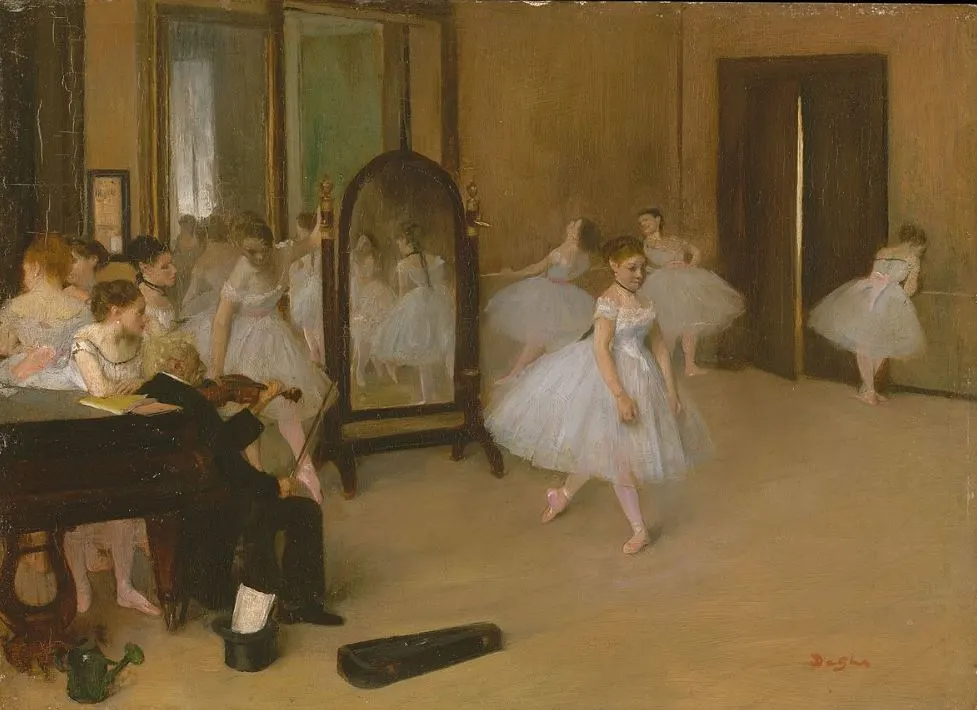
7. How big is The Ballet Class by Edgar Degas?
The artist had to scramble to make a living during the 1870s so he didn’t produce the monumental works of art he completed a decade earlier.
The Ballet Class by Edgar Degas is a medium-sized oil on canvas painting that has dimensions of 85 x 75 centimeters (33 × 30 inches).
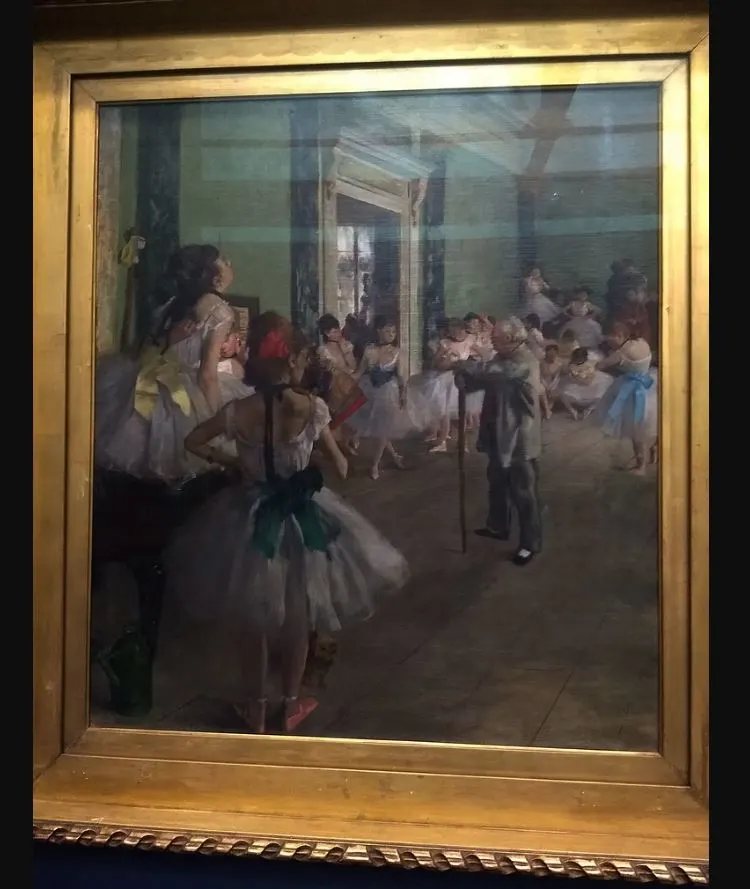
8. Where is Degas’s famous painting located today?
The painting was never owned by the man who commissioned it but was instead sold to an English art collector in London in 1876 named Henri Hill, Brighton.
It moved back to Paris in the late 1880s and eventually ended up in the collection of Count Isaac de Camondo (1851-1911) who bequeathed it to the French state.
It was initially displayed at the Louvre Museum between 1911 and 1986 but was moved to the Musée d’Orsay in 1986 where it remains today.
